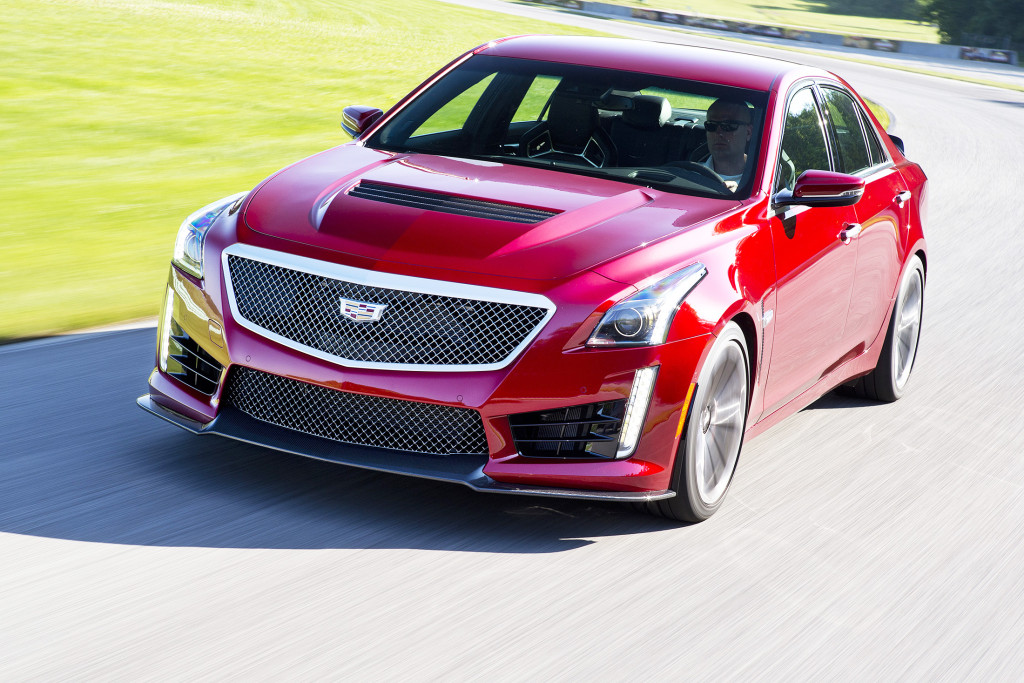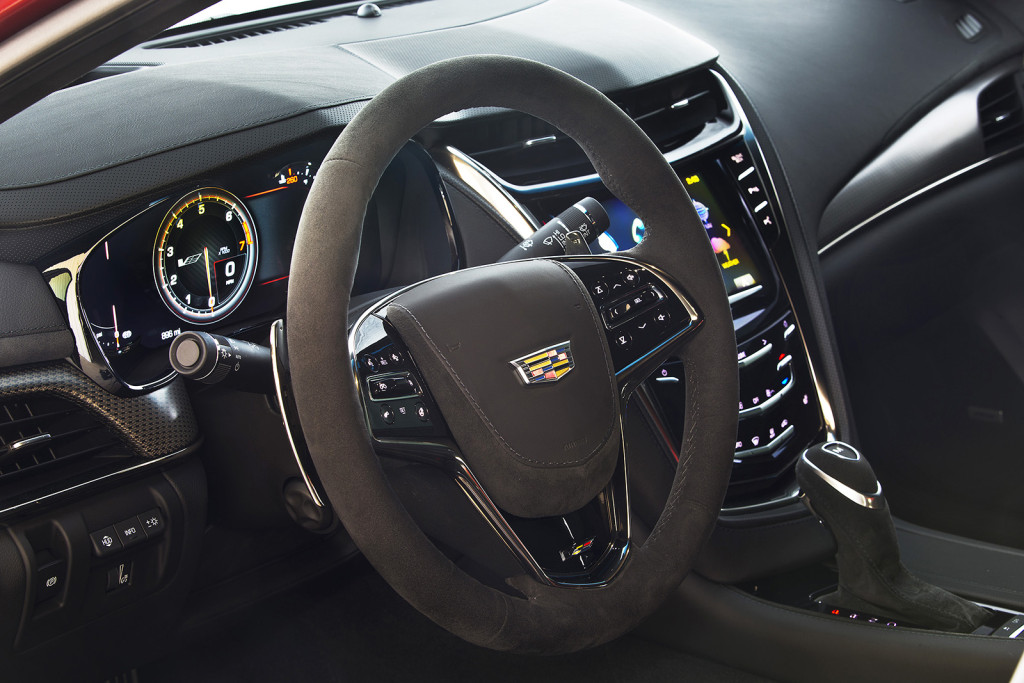Cargazing
By Derek Price
In case any members of the law enforcement community are reading this, I’ll start the next sentence with a disclaimer.
Hypothetically, in theory, this is a car that could accidentally reach 105 mph before you reach the end of a short Interstate on-ramp, just by glancing away from the speedometer and letting your foot linger on the accelerator a bit too long.
It’s called the Cadillac CTS-V, and that “-V” makes all the difference in the world. Unlike the standard CTS, which is a very nice but perfectly sensible luxury car, the CTS-V leaves all sensibility at the door.
Cadillac gave it a carbon fiber hood to reduce weight, Brembo brakes that are bigger than your head, a magnetic suspension system that’s designed for racetrack use, and a customizable traction control system to help keep the car pointed in the right direction.
When you realize what’s under the hood, you’ll see why you need all that help.

All the slots, vents and air intakes on the 2016 Cadillac CTS-V are designed to cool its massive, 6.2-liter supercharged V8. With lots of carbon fiber and race-focused engineering, this is a luxury car designed for track days.
The CTS-V shoehorns a 6.2-liter supercharged V8 up front that sends an insane 640 horsepower to the rear wheels — even more than comparable twin-turbo engines from Mercedes and BMW performance models.
Cadillac says it can reach 60 mph in just 3.7 seconds and hit a Ferrari-like top speed of 200 mph.
So again, in theory, if it were to reach 105 on the on-ramp, it would barely be getting warmed up.
Like any supercar, the CTS-V is not really engineered for driving on public streets. It feels out of its element, like a cheetah forced to live in a small cage at the zoo. It wants to run, but it can’t — at least not without spending a night in your local sheriff’s Hilton — so you’ll need to buy some track time to fully appreciate it.
What was totally surprising to me, though, was how effortlessly it gets up to speed. I’ve never driven a car that makes it so easy to accidentally go too fast, and that’s for a simple reason: it doesn’t give you the sensory overload that most supercars do.
Driving a Dodge Viper, it’s easy to tell you’re going too fast because the wailing engine makes you sound like a jerk and your eardrums start to hurt.
But driving a CTS-V, which is the most quiet, smooth and stable car I’ve ever driven at highway speeds, you just don’t get a sense for how fast you’re moving. It’s almost eerie.
The closest thing I’ve ever felt to this was a V12-powered Mercedes CL-Class that cost over $120,000 years ago. It makes the $95,890 price of today’s test car feel a bit more palatable, if you want to rationalize it.
Another thing that might help: “Honey, it’s got four doors! It’ll fit the car seats!”
Rarely do cars combine comfort, practicality and raw speed like this one. The Dodge Charger Hellcat (707 horsepower, $67,645) comes close, but it doesn’t offer anywhere near the level of luxury or highway silence you get in the speedy Caddy.

Digital screens in the CTS-V’s cabin help you make the most of this car’s performance. A data recorder can help you record lap and acceleration times.
Some other notes from my week-long drive in the CTS-V:
— It’s super easy to lose grip to the rear wheels under acceleration, but the electronics do a good job keeping you pointed in the right direction. It might give you too much confidence at times.
— When you’re parked at idle, you can see the heat rising up from the engine through the cooling vents on top of the hood.
— I’m not as wild about CUE, Cadillac’s digital interface, as the last time I used it. But the voice recognition part worked pretty well when I’d tell it an address or use it to find a point of interest.
— It has a very, very nice cabin. It feels expensive (and it is).
Pricing starts at $83,995 for the CTS-V Sedan, which is around $38,000 more than the regular CTS’ starting price of $45,560.
At a Glance
What was tested?
2016 Cadillac CTS-V Sedan ($83,995). Options: Carbon fiber package ($5,500), Recaro high-performance seats ($2,300), performance data recorder ($1,300), gas guzzler tax ($1,000), Red Obsession paint ($500), sueded microfiber steering ($300). Price as tested (including $995 destination charge): $95,890
Wheelbase: 114.6 in.
Length: 197.6 in.
Width: 72.2 in.
Height: 57.2 in.
Engine: 6.2-liter supercharged V8 (640 hp, 630 lb.-ft.)
Transmission: Eight-speed automatic
EPA Mileage: 14 city, 21 highway
RATINGS
Style: 10
Performance: 10
Price: 7
Handling: 9
Ride: 10
Comfort: 10
Quality: 9
Overall: 10
Video Review:
2016 Cadillac CTS-V
bit.ly/2016cts-v
Why buy it?
Not only is it insanely fast with a top speed of 200 mph, but it feels shockingly stable and silent on the highway. It’s a supercar that’s both comfortable and sophisticated — a rare combination.
